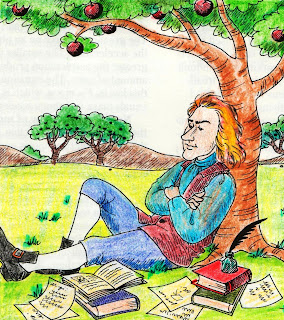For my second critical media blog I chose the YouTube video by Khan Academy titled Basics of gravity and the law of universal gravitation http://youtu.be/Xcel427Ezl0. According to the Khan Academy website (http://www.khanacademy.org/about) it is a free world-class education for anyone anywhere. “The Khan Academy is an organization on a mission. We're a not-for-profit with the goal of changing education for the better by providing a free world-class education to anyone anywhere. All of the site's resources are available to anyone. It doesn't matter if you are a student, teacher, home-schooler, principal, adult returning to the classroom after 20 years, or a friendly alien just trying to get a leg up in earthly biology. The Khan Academy's materials and resources are available to you completely free of charge.” Bill Gates of Microsoft is a supporter of the Khan Academy and includes information about the Academy in the Gates Notes http://www.youtube.com/watch?v=UuMTSU9DcqQ&feature=player_embedded
Each video is a digestible chunk, approximately 10 minutes long, and especially purposed for viewing on the computer. Drawings are made with SmoothDraw, which are recorded and produced using video capture from Camtasia Studio. Khan refused the format that would involve a person standing by a whiteboard, desiring instead to present the content in a way akin to sitting next to someone and working out a problem on a sheet of paper: "If you're watching a guy do a problem [while] thinking out loud, I think people find that more valuable and not as daunting. I teach the way that I wish I was taught. The lectures are coming from me, an actual human being who is fascinated by the world around him." —Sal
For this video on gravity the Khan Academy starts with a brief history of the pioneers in the field, Isaac Newton and Albert Einstein. Pictures are shown and Khan’s voice is heard discussing objects, such as an apple, falling from a tree. Khan notes that the pioneers thought outside the box and asked why did the apple fall from the tree?
Following the brief history Khan writes out and explains the universal law of gravity. Seglem (2009) states that the world is made up of visual symbols that require more complex thinking skills than traditional literacy requires. Khan’s use of video tutorials helps people with these more advanced or complex thinking skills. Serafini (2011) notes, that meaning is derived from the position of images in the temporal sequence of written text. The meaning is derived from the spatial relations or grammar of visual images.
where:
- F is the force between the masses,
- G is the gravitational constant,
- m1 is the first mass,
- m2 is the second mass, and
- r is the distance between the masses.
He explains how G is small and uses a calculator to show the calculation of his weight in Newtons. He then states that the force is equal between him and the earth at the calculated 686 Newtons because acceleration in the formula F= m x a (force= mass x acceleration) is super small.
References
Seglem, R. & Witte, S. (2009). You gotta see it to believe it: Teaching visual literacy in the English classroom. Journal of Adolescent & Adult Literacy, 53(3), 216-226. doi:10.1598/JAAL.53.3.3
Serafini, F. (2011). Expanding perspectives for comprehending visual images in multimodal texts. Journal of Adolescent & Adult Literacy, 54(5), 342-335. doi:10.1598/JAAL.54.5.4




No comments:
Post a Comment